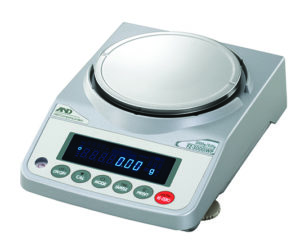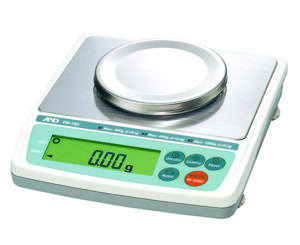Trade Approved Balance Verification
 When a balance receives a certificate of approval from the NSC/NMI (National Measurement Institute), it undergoes an evaluation based on a specific class of accuracy. This class of accuracy defines the criteria and parameters that the machine must meet when submitted for trade stamping. The certification ensures that the balance complies with the required standards. Making it suitable for use in trade applications where accurate measurements are essential.
When a balance receives a certificate of approval from the NSC/NMI (National Measurement Institute), it undergoes an evaluation based on a specific class of accuracy. This class of accuracy defines the criteria and parameters that the machine must meet when submitted for trade stamping. The certification ensures that the balance complies with the required standards. Making it suitable for use in trade applications where accurate measurements are essential.
The verification interval is a crucial parameter in the certification process, determining the minimum increment for which the balance can be approved. Despite a balance having the capability to display readings with high precision, the verification interval for trade purposes may differ and be less precise. For example, in the case of the GX-2000 balance, which can provide readings to 0.01 g, the verification interval when the machine is stamped for trade might be set at 0.1 g. This ensures that the approved balance meets the necessary standards and requirements for trade applications.
Balances and Treatment of Non-Significant Digits
The treatment of the non-significant digit in the display varies among balances. While most balances will still show the non-significant digit (often enclosed in brackets), certain models, like the Class III EK-i, may omit the last digit entirely. The EW-150i takes a different approach by excluding an entire range. It’s essential to note that the verification digit is the one to which the balance is certified for trade purposes. Below, you’ll find a list of trade-approved balances along with their accuracy class and verification digit for clarity.
| Trade Approved Balances | Verification Digit | Trade Approved Balances | Verification Digit |
| EK-410i 400g x 0.01g Class III | 0.1g | GX-8000 8100g x 0.1g Class II | 1g |
| EK-610i 600g x 0.01g Class II | 0.1g | GX-203A 220g x 0.001g Class II | 0.01g |
| EK-4100i 4000g x 0.1g Class III | 1g | GX-403A 420g x 0.001g Class II | 0.01g |
| EK-6100i 6000g x 0.1g Class II | 1g | GX-603A 620g x 0.001g Class II | 0.01g |
| EW-150i 60/150g X 0.02/0.05g Class II | 0.02g/0.05g dual range | GX-2002A 2200g x 0.01g Class II | 0.1g |
| EW-1500i 300/600/1500g X 0.1/0.2/0.5g Class III | 0.1g/0.2g/0.5g | GX-4002A 4200g x 0.01g Class II | 0.1g |
| EW-12Ki 3000/6000/12000g X 1/2/5g Class III | 1g/2g/5g | GX-6002A 6200g x 0.01g Class II | 0.1g |
| FZ-300i 320g x 0.001g Class II | 0.01g | GX-6001A 6200g x 0.1g Class II | 1g |
| FZ-3000i 3200g x 0.01g Class II | 0.1g | GX-8K 8100g x 0.01g Class I | 0.1g |
| FZ-300i-WP 320g x 0.001g Class II | 0.01g | GX-10K 10100g x 0.01g Class I | 0.1g |
| FZ-3000i-WP 3200g x 0.01g Class II | 0.1g | GX-20K 20000g x 0.1g Class II | 1g |
| GX-200 210g x 0.001g Class II | 0.01g | GX-10K 10100g x 0.01g Class II | 1g |
| GX-400 410g x 0.001g Class II | 0.01g | GP-12KA 12kg x 0.1g Class II | 1g |
| GX-600 610g x 0.001g Class II | 0.01g | GP-20KA 21kg x 0.1g Class II | 1g |
| GX-2000 2100g x 0.01g Class II | 0.1g | GP-32KA 6.1kg x 0.1g /31kg x 1g Class II | 1g |
| GX-4000 4100g x 0.01g Class II | 0.1g | GP-30KA 31kg x 0.1g Class II | 1g |
| GX-6100 6100g x 0.01g Class II | 0.1g | GP-100KA 101kg x 1g Class II | 10g |
Who Needs Trade Approved Balances?
Trade measurement laws apply to all retail and wholesale transactions where measurement determines price.
You must comply with Australia’s trade measurement laws if you:
- buy or sell goods or services by measurement (e.g. selling meat, compounding medication, buying gold, or transporting freight by weight)
- manufacture, pack, import, or sell pre-packaged goods
- supply or maintain measuring instruments used for trade.
Consistency and certainty in measurement supports fair and open competition. It makes all businesses, regardless of their size or financial strength, follow the same rules.
 The Different Classes of Scales
The Different Classes of Scales
Accuracy classes help categorize scales in a couple of ways:
- They determine which applications the scale will be suitable for.
- They establish the tolerances that will be applied when the scale is tested.
To be assigned a particular accuracy class, a scale must meet specifications. They are grouped into classes based on two factors:
- The number of scale divisions (n). This is the scale’s capacity divided by its readability (the smallest number it can display). For example, for a scale with a 500 g capacity and a readability of 0.01, n is equal to 500 divided by 0.01, which is 50,000.
- The verification scale interval (e). In commercial settings, weight-based pricing requires a minimum weight interval.
| Class | Verification scale interval (e) (in SI units) | Minimum number of scale divisions | Maximum number of scale divisions | Applications |
| I | ≥1 mg | 50,000 | High-precision weighing in laboratories. | |
| II | 1 to 50 mg | 100 | 100,000 | Laboratory weighing for products including precious gems and metals, grain, and medical cannabis. |
| ≥100 mg | 5,000 | 100,000 | ||
| III | 0.1 to 2 g | 100 | 10,000 | Commercial weighing for products such as precious metals, and semi-precious gems. Also used to weigh animals, laundry, mail, and vehicles (vehicle scales with capacity ≤ 30,000 lb). |
| ≥5 g | 500 | 10,000 | ||
| IIIL | ≥2 kg | 2,000 | 10,000 | Commercial weighing for heavier loads, for example, livestock weighing systems, axle-load scales, and higher-capacity vehicle scales. |
| IIII | ≥5 g | 100 | 1,200 | Highway weight enforcement, for example, portable axle-load scales and wheel load scales. |
Weight Conversation Chart
| Kilograms (kg) | Grams (g) | Milligrams (mg) | Micrograms (ug) |
| 1kg | 1000g | 1000000mg | |
| 0.5kg | 500g | 500000mg | |
| 0.1kg | 100g | 100000mg | |
| 0.05kg | 50g | 50000mg | |
| 0.02kg | 20g | 20000mg | |
| 0.01kg | 10g | 10000mg | |
| 0.005kg | 5g | 5000mg | |
| 0.002kg | 2g | 2000mg | |
| 0.001kg | 1g | 1000mg | 1000000ug |
| 0.1g ( 1place) | 100mg | 100000ug | |
| 0.01g (2 place) | 10mg | 10000ug | |
| 0.001g (3 place) | 1.0mg | 1000ug | |
| 0.0001g (4 place) | 0.1mg | 100ug | |
| 0.00001g (5 place) | 0.01mg | 10ug | |
| 0.000001g (6 place) | 0.001mg | 1ug |

